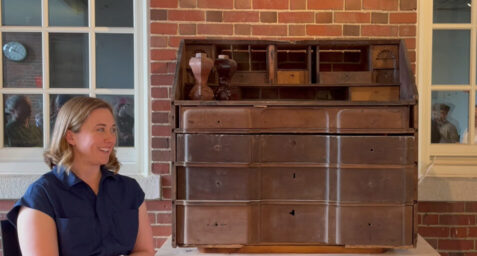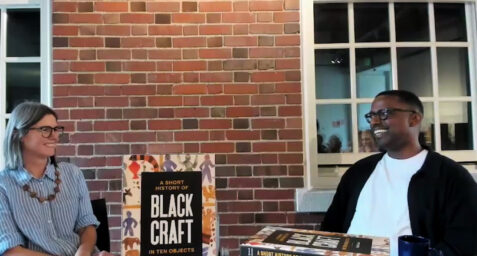In the Making: Kolin Schmidt
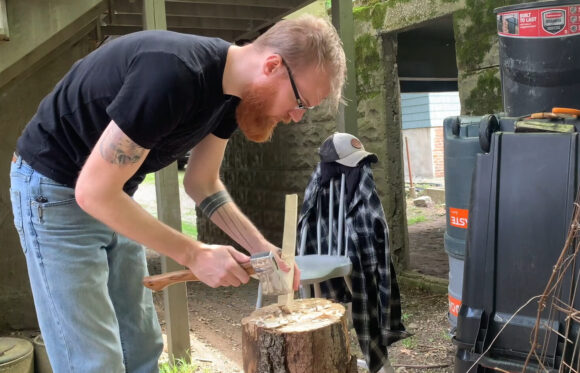
“Look at all the good that came out of this odd situation.”
Kolin Schmidt CF ’21 was working in architecture before the Cabinet & Furniture Making program at NBSS caught his eye. A fan of both forms and process, his fondness for the Arts and Crafts movement comes as no surprise. Its philosophy of marrying industrialization and the handmade helped shape the training at NBSS after all.
When Kolin found himself quarantined inside a few months ago, he refocused his purpose as only someone at NBSS would: by building himself a shavehorse, foraging felled trees near his home, and then carving spoons in a local park.
Not to be outdone, since those early days, he also learned how to craft his own handwritten letterforms, from creating each character, to writing a sentence, to making it his natural primary form of writing—a personal branding of sorts.
Needless to say, Kolin is an artisan who can’t sit idle. We talked about these creative projects and how he’s made the best of an otherwise challenging situation during the lockdown.
Below is an excerpt from our conversation, edited for space and clarity.
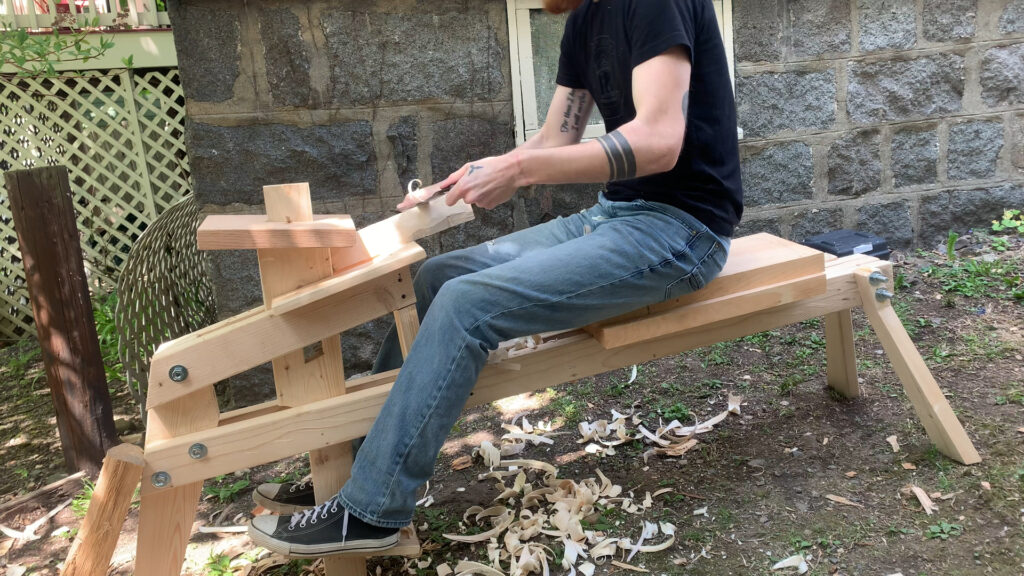
Kristen Odle: Hi Kolin! Tell me what’s going on with you.
Kolin Schmidt: I don’t have a workshop or a workspace, so I’m trying to find creative solutions and good ways to pass the time: reading, researching, a lot of documentaries.
In all of this, I discovered a real love for the Arts and Crafts Movement. The Cabinet & Furniture program gives you small tidbits about makers and periods of furniture, but it’s up to you to delve more into those if you so choose.
KO: And that’s a new discovery for you?
KS: Yes! It has been a very exciting revelation and something that I think I will be able to look back on and say, “Look at all the good that came out of this odd situation.”
As far as hands on stuff, not having a makerspace has made doing much of any hands-on stuff difficult. I was able to get some tools from the school and once it warms up a bit, I might try to do some work outside.
KO: That’s a great idea. You have the pond and the Arboretum right there.
KS: Yes. I’m going to try my hand at some spoon carving, which should be easy to do in a small space. I ordered a couple small knives on the recommendation of Mr. Peter Galbert, and I’m going to do some foraging and try to find a few pieces of wood that might be useful as spoons.
I’m also debating trying to make some Windsor chairs. I would need to acquire the materials to make a shavehorse, to make a small kiln, and maybe even to make a small steam bending box…
KO: That’s a pretty big departure from a chip carving knife or a spoon carving knife, but I like the ambition. Go big, go bold.
KS: My thought is if we’re out for much longer, I think it would be a very smart thing to do.
Because those are things that I could be doing outside and still be producing something without a real shop space, using only hand powered equipment.
KO: Yeah. I mean, if that’s not entrepreneurial, then I don’t know what is.
Are there any techniques that you could teach yourself in your current scaled down, non-workshop environment?
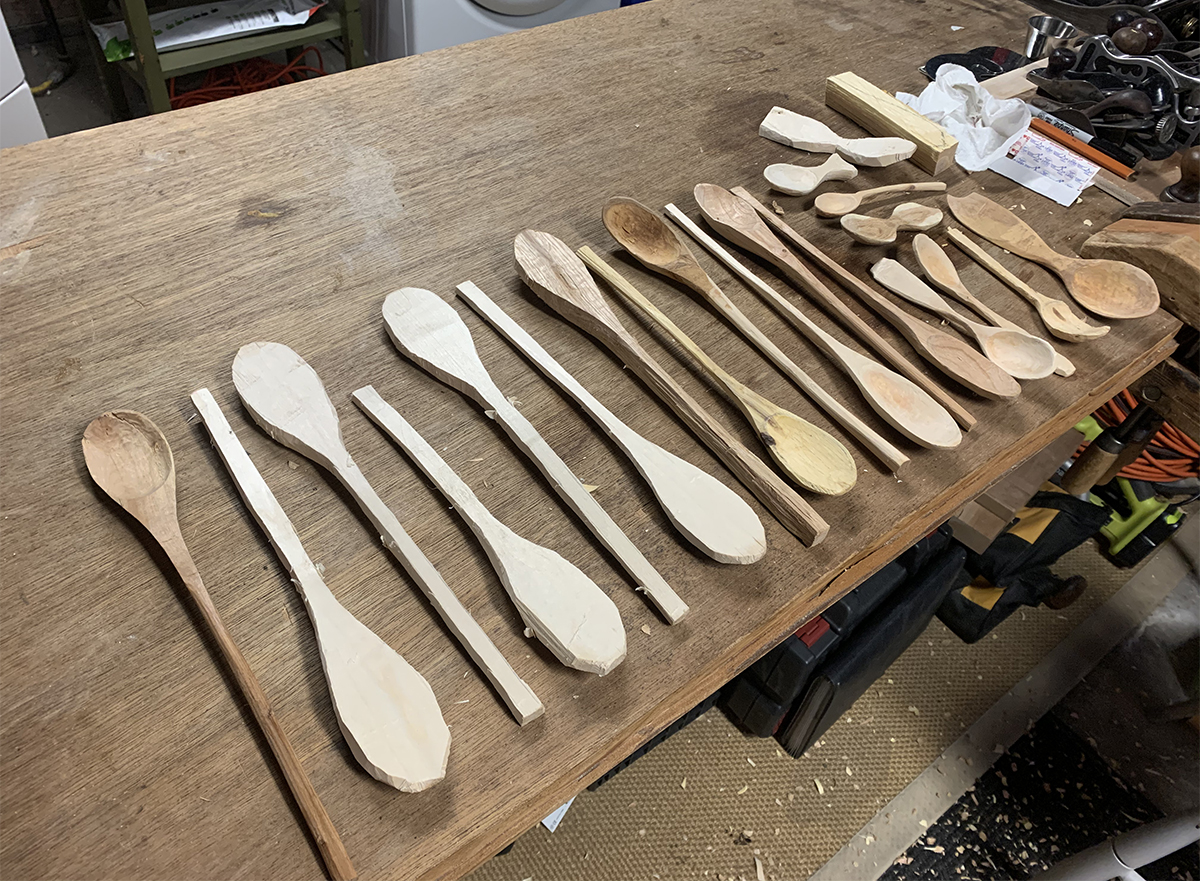
KS: I mean, the inspiration of the Arts and Crafts movement was getting away from industrialization, getting back to handmade, and so I do think there are a few small scale things I could try, but again without a devoted shop space, I don’t know how successful I could be at many of the pieces.
KO: Right. What kind of hand tools did you bring home with you? Do you have some chisels? Saws?
KS: Yeah. Some chisels, some planes, not much in the way of saws. I just have a dovetail saw. Some measuring devices, that’s about it.
KO: Are you getting to that point where you need to get your hands on something?
KS: I don’t know if I’ve hit a wall yet. I have several books here to look through and examine. I plan on designing a couple furniture pieces. So I do think I could find worthwhile activities for the next month, month and a half. I just start to worry that this could go on for even longer yet.
KO: Right. I know that you are proficient in SketchUp, and you were even helping out instructors. Is that something that you would consider teaching on a broader scale?
KS: I absolutely would. I really enjoy teaching and I have a great affinity and passion for SketchUp.
Oh, something else exciting I’ve been working on – developing my own lettering, my own font, my own typeface, however you want to call it.
KO: That’s awesome. In Photoshop or Illustrator or something?

KS: By hand. Handwritten.
KO: Wow!
KS: I’ve always found my handwriting to be sloppy, but I’ve never really had incentive to do anything about it. However at my previous job, before I moved out here, it was at a hand drafting company and my colleague had developed his own lettering and it was beautiful. It was so incredible.
KO: So how does that work? Are you training yourself to hand write a certain way, or are you creating your own font that you will digitize to then be able to type it?
KS: I haven’t thought ahead far enough as far as digitization, but he took inspirations from different fonts that he liked and made his own, and taught himself how to very proficiently write in this lettering type.
KO: Wow. In many ways that’s like teaching yourself a new language.
KS: It has felt that way. I’m going through one letter at a time and trying to develop something unique yet matching, and then I have to do numbers, symbols, and sentence structure. And then after all that’s done, I have to teach myself how to write it!
KO: I think that’s a brilliant use of your time to keep your creative mind active.
KS: Yeah, I’m excited, and it’s something that takes a lot of time. I was told this process would take me years to do, but is an extremely rewarding process because you really are kind of creating your own language.
KO: It’s like it’s an analog maker’s mark in a way, a thumb print.
KS: Yeah.
KO: Makers, artisans, and craftspeople are addressing their grit and adaptability every day. Anything inspiring that you’ve learned about yourself as a maker over these past few weeks?
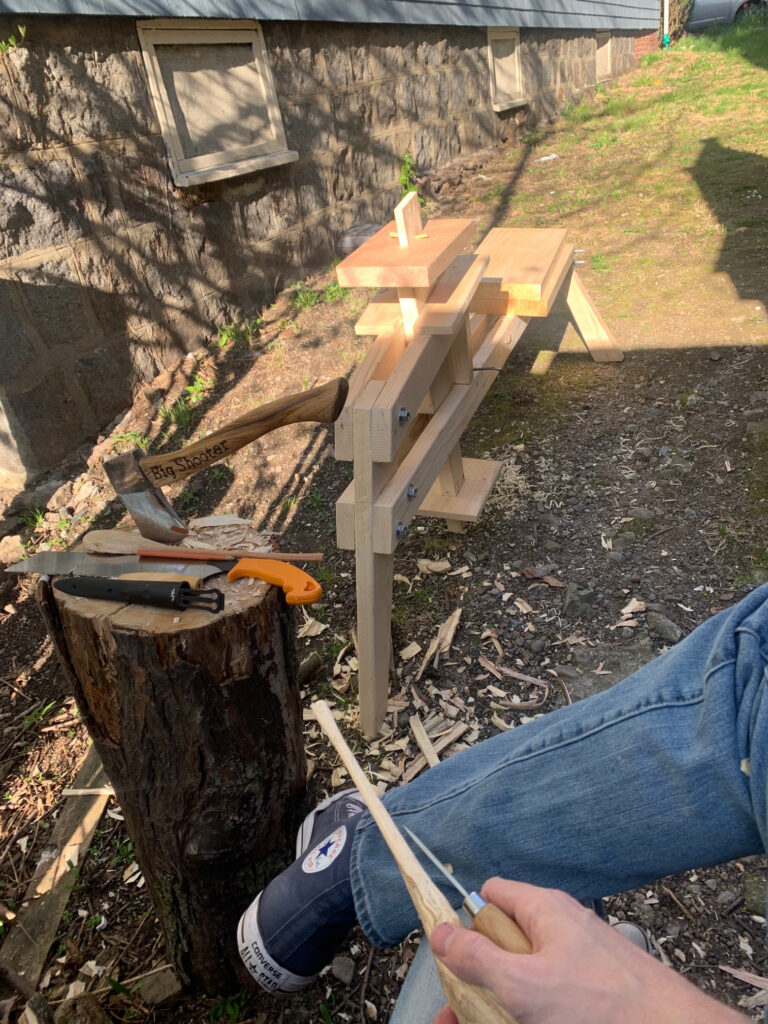
KS: Yeah, absolutely. Something I’ve been thinking about since I started here at NBSS and ever since I kind of stepped away from architecture – a field where I was doing well, I was being successful, I had a good career ahead of me – is that this field of artisan craft carries with it a lot of uncertainty. You kind of rely on either the willingness to do work that maybe you don’t want to, or the good fortune of acquiring a particular clientele.
I think, I hope, that a lot of us will come out the other side of this situation, having a better understanding and aptitude for what we are going to do and how to acquire some new skills before all of this is said and done.
KO: That’s very well said. We’re all living in these virtual platforms right now, so knowing that you can always build something with your own two hands is hugely important, even if it’s just a stool to sit on.
KS: And a bowl to eat out of, with a spoon that you carved. [laughs]
Next up: After several months of working from Boston, Kolin decided to go back home to Iowa, where we could use his family’s workshop space. Take a tour of Kolin’s home workshop.
“In the Making” is a series of video interviews with members of our community where we get insight to their lives and work. Learn more about the conversations, and view a full list of interviews on the series homepage.
